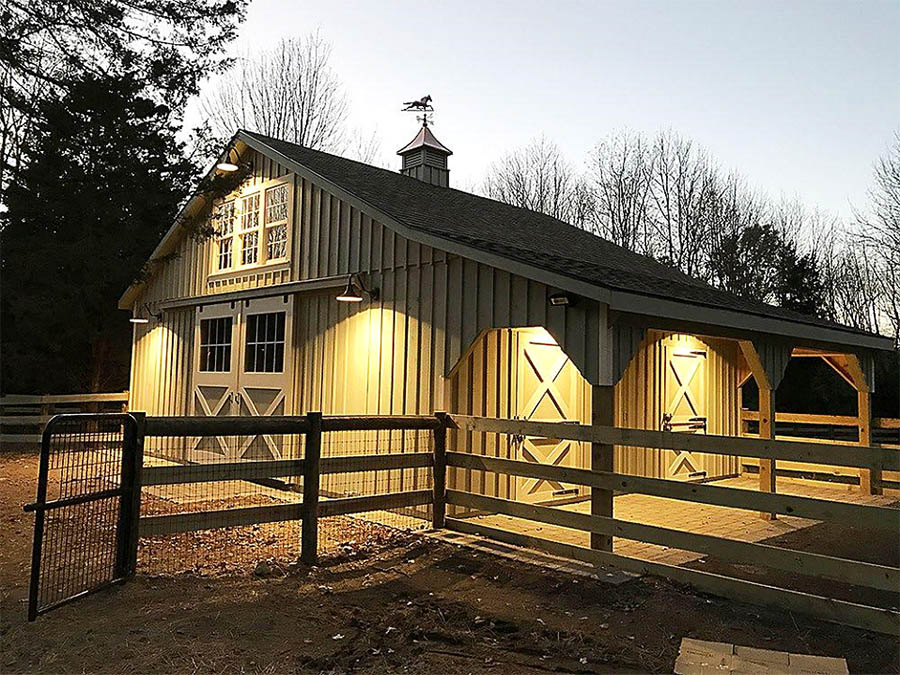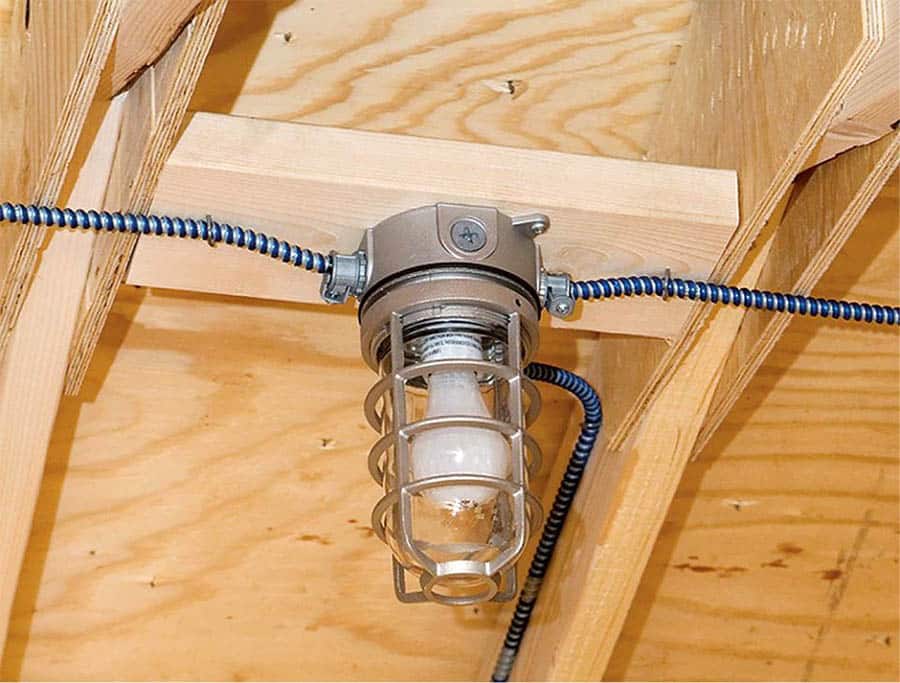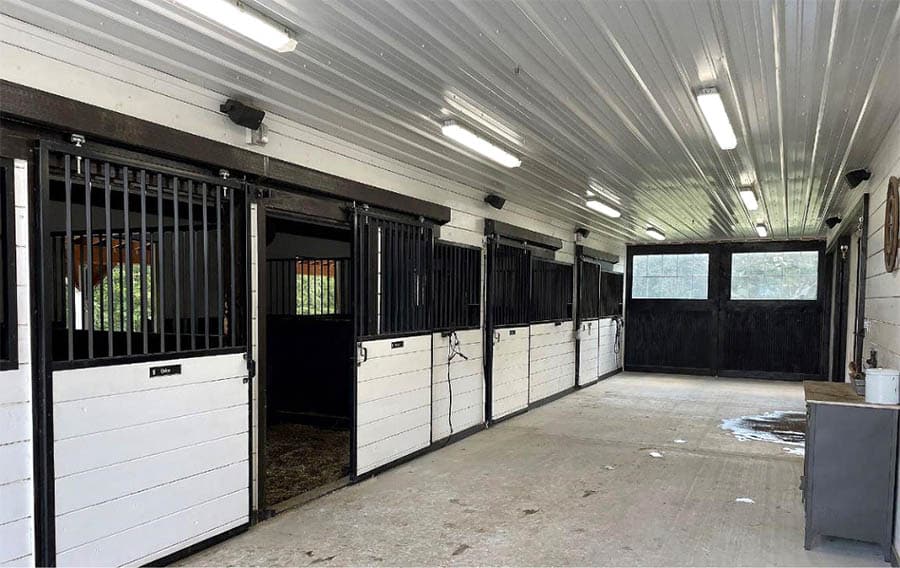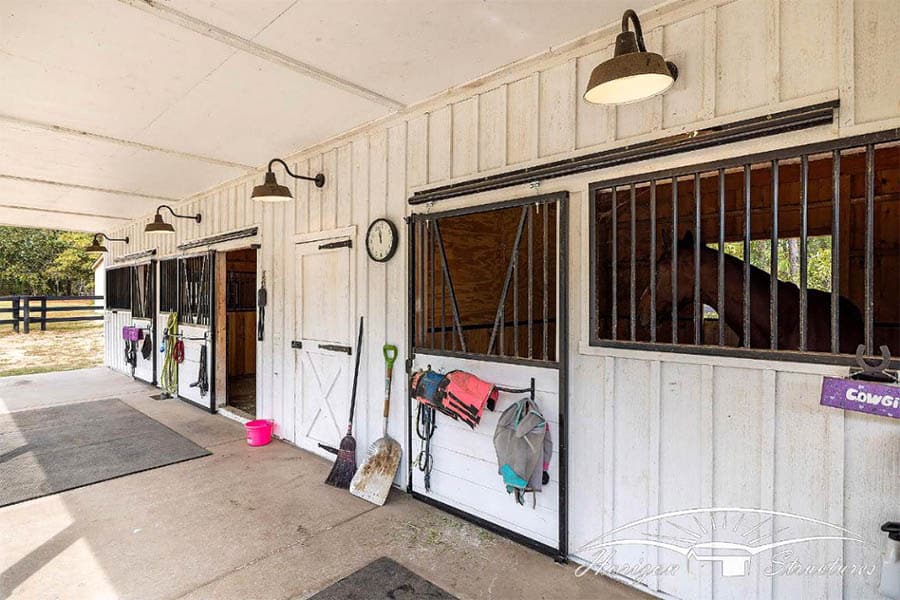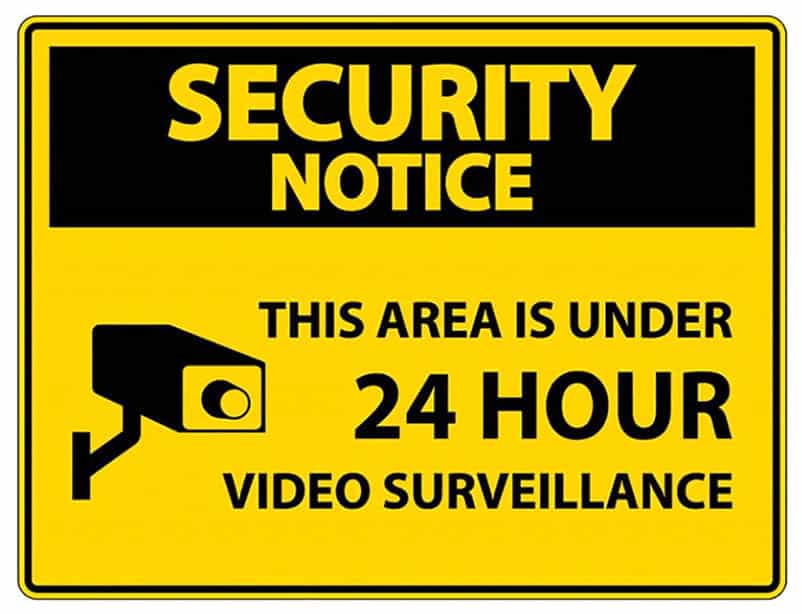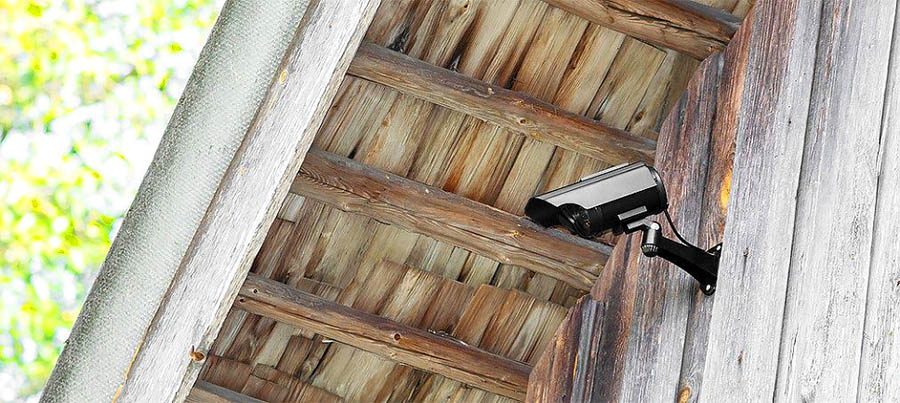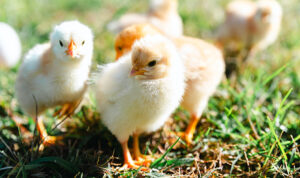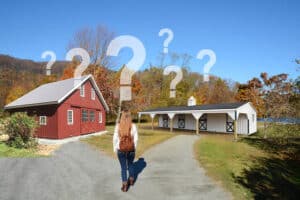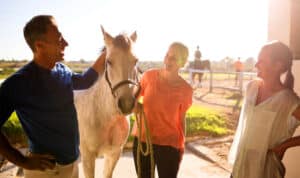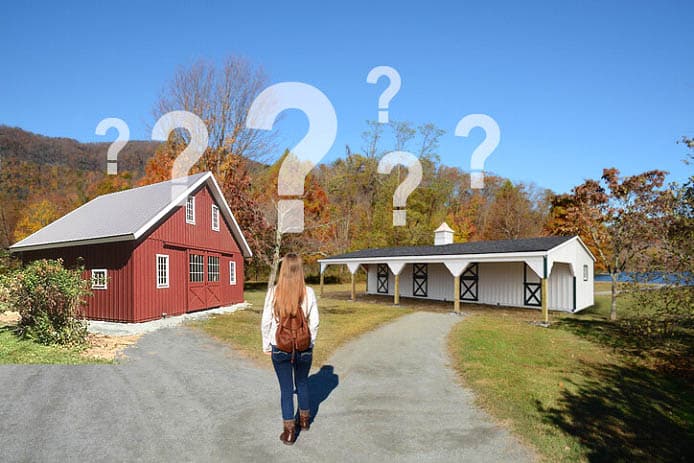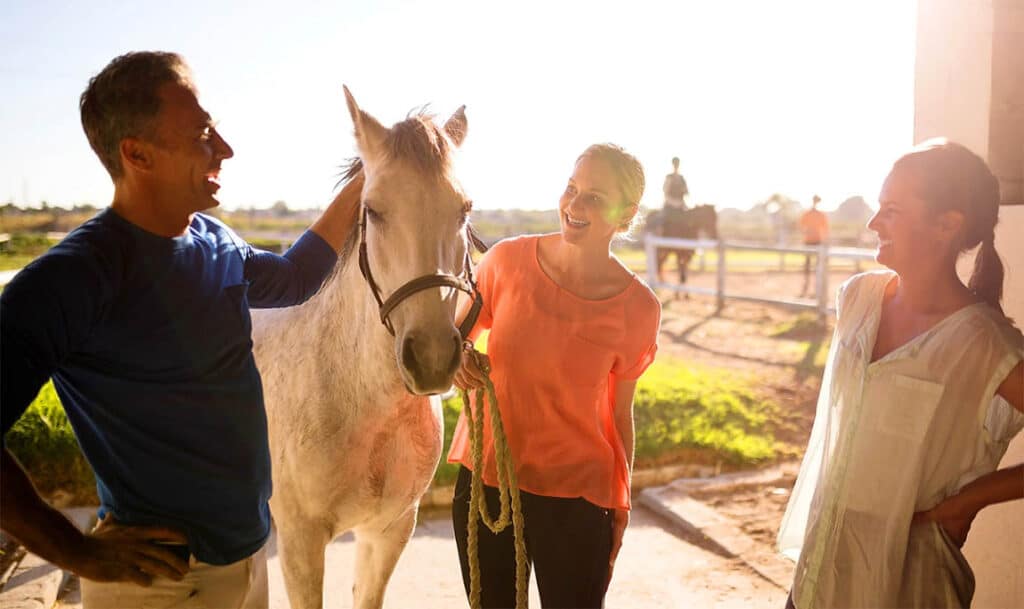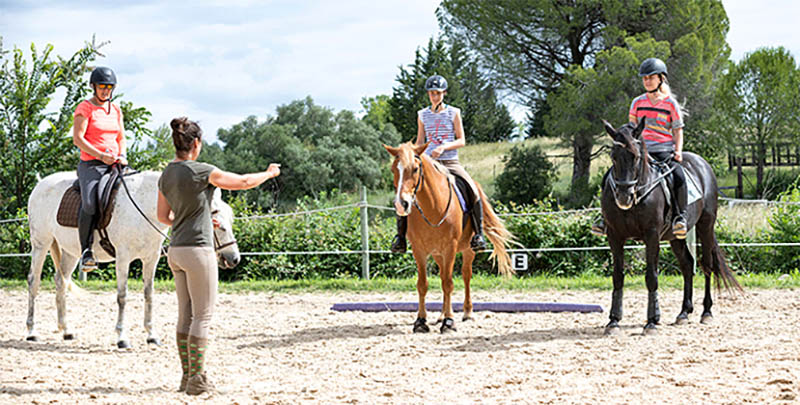Adding illumination to any working space increases both its usefulness and improves the safety level during its use. Unless your new horse housing consists of a run-in shed placed in the middle of a pasture, you’re probably going to want to add horse barn lights to your new barn.
In addition to planning ahead in the construction project for lighting needs, it’s a good idea to also consider hard wiring for security devices. Sadly, in today’s world the prevalence of theft and other nefarious activity continues to increase at horse farms.
Horse properties are often located in rural areas, with buildings commonly located in areas that are hidden from the direct view of the road or out of direct view of a residence, making them an attractive target for interference. Valuable equipment such as ATVs, UTVs, expensive tack and of course equines kept on the property, all invite tampering and criminal activity.
The electrical system should also provide plenty of GFIC rated outlets and their placement should always be within easy reach, so no extensions are required for them.
to be utilized. Outlets should be protected and distanced from equine interference. Consider placement for use for water tank heaters, grooming vacuums, clippers, and medical equipment, fans, or other mechanical cooling aids, and have outlets located inside and outside the structure that are appropriately rated for their location.
Most towns have specific codes about what types of fixtures and bulbs can be used for your horse barn lights in order to protect the property owner from making an unsafe choice. A licensed electrician should always be employed to complete the electric system install or the task should be reviewed by such if building codes allow owner installation.
If possible, purchase a barn with electrics roughed in (likely available with a modular barn purchase) as this can save you much time and money. While some State and Town laws do not allow it, many do and employing a licensed electrician on site to complete the task once the building is erected can then be orchestrated.
Lighting Types and Placement
Limiting energy use factors high on the list of priorities for many folks. Solar and thermal powered electrical systems, long- lasting LED light bulbs and a laundry list of specialist components can be incorporated into the design of an electric system to maximize both efficiency of purpose and minimize the amount of energy it requires to operate.
Talk to your local electric company that supplies your services, to find the best barn lights for your barn. Sometimes grants are available to offset expenses if the right products are installed.
The amperage available to supply the system or electrical run must be more than sufficient to handle the load, and the wattage of bulbs used must match the fixture parameters. A licensed electrician should conduct the mathematics and design of the system, especially if generators are to be added to the equation.
Parameters for light fixture safety include not just encasing bulbs to protect them from errant damage from horse or human that would cause the bulb to shatter, but also the need for cleaning the fixture should also be considered. While placement of any light fixture should be well out of the reach of any equine, placing a chandelier high in the rafters or spotlight fixtures high in the corners of stalls can offer a safety challenge for changing bulbs and keeping the fixtures free of cobwebs and dust that can cause fires.
Lighting fixtures, such as stall light fixtures, selected for installation inside a horse barn in areas where weather, moisture, or condensation from metal roofs etc. are issues, should be suitable for use in an inside/outside environment. This includes the bulbs used. As barns are not generally heated spaces, and interior of buildings are commonly hosed or power washed down, consider this factor carefully in your fixture selection.
Placement of lights in center aisle space is commonly seen running down the center of the aisle. While this looks aesthetically pleasing and fulfils the requirement of spreading an even light, it is not the best placement for efficiency of use.
If you’ve ever clipped a horse, tried to pick a horse’s feet, or do a world class grooming job working on an equine standing on crossties in the aisle in such circumstances, you’ll know that the light that illuminates the horse’s back is not much help when you are working on his flanks or hooves. A double line of fixtures placed to either side of the center line equidistant from the front stall walls will work much better as stall light fixtures in these circumstances.
Wash stalls will require very specific placement and type of light fixtures and outlets (if allowed). It is best to consult with a licensed electrician for specific requirements for these areas.
Switches will ideally be two-way switch systems that operate from both ends of the barn where there are two entrances such as a center aisle design. There should be a light switch at all entry points to a building and such placement is required by code where codes apply.
Exterior Lights/Barn Security and Security Layering
Commonly used lighting/barn security devices can include many useful features such as motion and heat sensors, infra-red cameras that will give photographic detail during darkness hours, and light sensors that will automatically switch lights on at dusk and off again at dawn.
Lighting an exterior area provides an extra safety blanket for users of the building as it adds a feeling of security and comfort for horse caregivers when at the building alone such as night checks. It also makes loading/unloading horses late at night when you return from a show or early in the morning when you are headed out much easier.
If you don’t have easy access to an indoor arena, a lighted yard can also be useful for that late night colic or choke walk with your horse while waiting for the vet.
Barn security devices such as trail cams, porch cams, driveway alarms, CCTV units (and dummy cameras designed to foil the less experienced criminals or nuisance crime) are all great options when it comes to creating a layered security system on the horse property.
Many people camouflage a ‘watch’ camera that surveilles another camera, especially where the camera maybe an expensive unit or in prominent placement, as non – permanent installed cameras such as trail cams are sometimes stolen. This is a particular problem if the trail cam is a unit that records data on a SIM card versus utilizing other technologies to transfer data live to another device where it is stored for longer term use.
Various means of recording and storage for video footage such as in the ‘cloud,’ WIFI service powered surveillance, live CCTV surveillance, battery powered units, solar or electrically hard-wired or wireless blue-tooth can all be employed to provide protection day and night. Be aware that wireless systems will have a limited range of coverage and may be subject to fluctuating picture quality due to bandwidth variations.
Data levels for the type of storage method of images/video collected can limit the usefulness of a security system. Placing a motion or heat sensor light in the wrong place can be more than an annoyance. As it will not only cause the light to come on and off if wrongly situated, if the light is also a security device it will also quickly fill any limited data storage method and drain battery power. If possible, avoid placement of limited data storage devices where they will capture areas of intense traffic levels such as passing traffic on a road or livestock/wildlife movements.
Installation of a layered system that allows protection to continue on the property despite power outages, adverse weather such as extreme cold temperatures that may damage solar based systems, lack of sunlight, etc. is a good protocol to ensure uninterrupted coverage.
Note: Be aware that in many States it is required that you post a clear notice that the property is being surveilled in a prominent place where people enter the property if you wish to utilize such evidence in court at a later date.
When installing lighting and security fixtures outside, always be a good neighbor and consider your neighbors proximity and the annoyance of adding floodlights and bright LED lights with motion detectors on your building where they will negatively impact folks that live in close proximity to the property.
In regard to security recording device placement inside the building don’t forget it is illegal to place devices in a bathroom.
While lighting is usually placed up high to cover the broadest space, motion detectors with alarms can become annoying at night if the environment harbors deer or other wildlife on a regular basis.
Security devices should be placed at various heights. The idea is to catch vehicle license plates entering and/or leaving the property, and low placement at entry ways that will capture the facial features of persons as they enter or approach the building. Get creative with placement behind indoor windows facing out, on trees and hedges, in plants/pots, on lawn decorations. Security devices are available disguised as almost anything you can think of to provide covert use, including kids’ toys, clocks, plants, plant pots, fake rocks etc.
Find Inspiration for Lighting Your New Barn! Visit Our Featured Projects Page HERE


